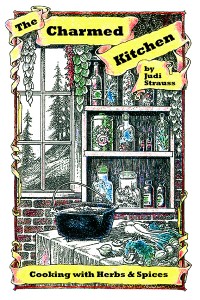The Challenge: Saving Specialty Ingredients
I got an e-mail from my cousin Marianne the other day. She was asking about capers. She bought them for one dish, but found she didn’t use them otherwise and ended up tossing them. There are those items that we all cook with that fall into this category. You might use it once in a great while but aren’t sure what else to do with it or how to keep it from going bad. These ingredients are often expensive and can be a great waste of money to just toss.
There are ways to handle the situation. You can find more uses for the product or ways to make it keep longer. So let discuss a few products and how you can get more from them.
Capers: The buds from the caper bush, capers come pickled and are salty and similar in flavor to gherkins. Probably most often used in tartar sauce they can be used lots of other places. Since they taste like intense little pickles use them where you might use pickles. Capers are great in potato salad, chicken, tuna or ham salads and in eggs dishes and omelets. They also go great with seafood. Once open they are kept in the fridge and will keep for a good while. For longer storage you can add a little vinegar to the jar to up the acidity. It will keep them longer.
Tomato Paste: Think of tomato paste as super concentrated tomato sauce. Strong in flavor a little goes a long way. How many of us have opened a jar for the one tablespoon of tomato paste a recipe calls for and then end up throwing the rest away when we find it in the back of the fridge weeks later looking like a science experiment gone bad? You can get tomato paste in squeeze tubes that keep longer in the fridge or you can freeze it. That seems to be the easiest solution. Put dollops of tomato paste in ice cube trays and freeze. Once frozen you can pop out the cubes, place them in little freezer bags, label and toss back in the freezer. Now when you need that tablespoon on tomato paste- you’ll have it.
Chutney: This fruit- based relish is used in Indian dishes. Most often made with mangoes. It can be used in tuna and chicken salad. You can use chutney as you might use cranberry sauce as a side dish or to glaze meats. A mix of fruit, garlic, vinegar, sugar and spices it has a complex flavor. I use it in boboti- a North African casserole. It is one of those items that you might use a couple of times and then forget about. Because of its sugar and vinegar base it will keep for a pretty long time in the fridge. Like tomato paste you can freeze the chutney in smaller amounts and defrost for later use. What’s better though is to start to use it more.
Ginger: This versatile root can be grated in everything from savory to sweet dishes. Although often associated with Asian cooking ginger is used in all sorts of foods. I get this question all the time. How do I keep my fresh ginger root longer? Some people like to peel it and place it in a jar of sherry and keep it in the fridge. You can also save peeled garlic cloves this way. But I prefer to just freeze it. Take the whole ginger root and place in a freezer bag. I like to keep mine on the freezer door so I can find it easily. When ready to use just scrape off the peel, like you might on a carrot. Use a grater on the ginger while it is still frozen and return the unused portion to the freezer. It will keep for a very long time this way- as long as the ginger is in a freezer bag. You can even slice and chop the frozen ginger- although I must admit that is a little trickier. Next time you are making gingersnaps try using the fresh/frozen ginger over the dried version.
Buttermilk: I buy fresh buttermilk planning on baking more with it. Unlike my friend Martha, I do not like to just drink it. That leaves me with unused buttermilk all the time. I hate just pouring that money down the drain. I freeze it! Keep in mind it will separate when thawed- but you can still cook and bake with it. Another easy solution is to buy powdered buttermilk and just mix up what you need. Yet another answer is to make your own- well, sort of. Just use regular milk in the recipe but add some acid to it to make it curdle. I use lemon juice- but vinegar works well, too. If the recipe calls for a cup of buttermilk- measure out the cup of milk just a little short-leaving room for the extra liquid. 1-2 tablespoons of lemon juice or vinegar per cup of milk will work fine.
I hope this helps you to save more of the food you buy and then end up saving money. Thanks for all the questions and input.




